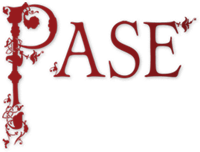Table of Contents
Top of page
Name
Summary
Distribution Map
Property List
Profile
Bibliography
Bottom of page
Hwætmann 4
Hwætmann of London, d. by 1086
Male
CPL
4 of 5
Summary
Hwætmann 4 (Hwætmann of London) was named in DB only because his widow had been given land in alms in west Middlesex since the Conquest.Profile
Hwætmann 4 occurs only in the account of a piece of land ‘given in alms’ and held in 1086 by his widow Ælfgifu, described as wife of Hwætmann of London (femina Wateman de Lond’). The estate is not named in DB but its unusual hidage allows it to be located at Hatton.Middlesex was characterized by manors assessed in blocks of 5 hides and their multiples and divisions (Pinder 1969: 82–3). It is therefore encouraging to find that two manors in Spelthorne hundred which had eccentric assessments fit neatly together. The calculation needs spelling out. Walter fitzOther’s named manor of Hatton was of ‘1 hide & 3 virgates & a 3rd part of 1 virgate’ (Mdx 11:4). At 120 fiscal acres to the hide and 30 fiscal acres to the virgate, that makes 1 hide + 90 acres + 10 acres = 1 hide 100 acres. Ælfgifu’s unnamed holding in the same hundred was assessed at ‘half a hide & a 3rd part of half a hide’, that is 60 acres + 20 acres = 80 acres. The two together add up to 1 hide 180 acres or 2½ hides. There are no other holdings in Spelthorne for which anything like so convincing a calculation can be made. Quite possibly Hatton as a whole was rated at 5 hides, since there was another manor of 1½ hides there (Mdx 7:1), besides another unnamed holding in Spelthorne of 1 hide (Mdx 5:2). It should be said that there is nothing in the later descent of land in Hatton to support this conjecture (VCH Mdx II, 309–14).
Beyond reasonable doubt it was the same Ælfgifu who had ½ hide at Greenford, a few miles north of Hatton and described in the next DB entry after her holding at Hatton (Mdx 25:3). She is not there called the wife of Hwætmann of London, but DB did not normally repeat the bynames or identifiers of minor tenants-in-chief when recording their property in successive entries.
It may be worth noting that the only other Middlesex manor which had been ‘given in alms’ to a widow, Lisson (Mdx 25:1), was later held by a serjeanty connected with the London mint (Pinder 1969: 117–18). As is more certainly the case with Hwætmann 3, there could well be a link between men called Hwætmann and the royal coinage.
Be that as it may, neither Hwætmann of London nor his wife Ælfgifu owned land at Hatton or Greenford TRE. Ælfgifu’s acquisition of a small estate in west Middlesex looks like a charitable gift by William I to the widow of a notable (and presumably loyal) Londoner.
Bibliography
Pinder 1969: T. G. Pinder, ‘Domesday Survey’, in The Victoria History of the Counties of England: A History of the County of Middlesex, I, ed. J. S. Cockburn, H. P. F. King, and K. G. T. McDonnell (London: Oxford University Press for the Institute of Historical Research, 1969), 80–118
VCH Mdx II: The Victoria History of the Counties of England: A History of the County of Middlesex, II, ed. William Page (Westminster: Archibald Constable, 1911)
